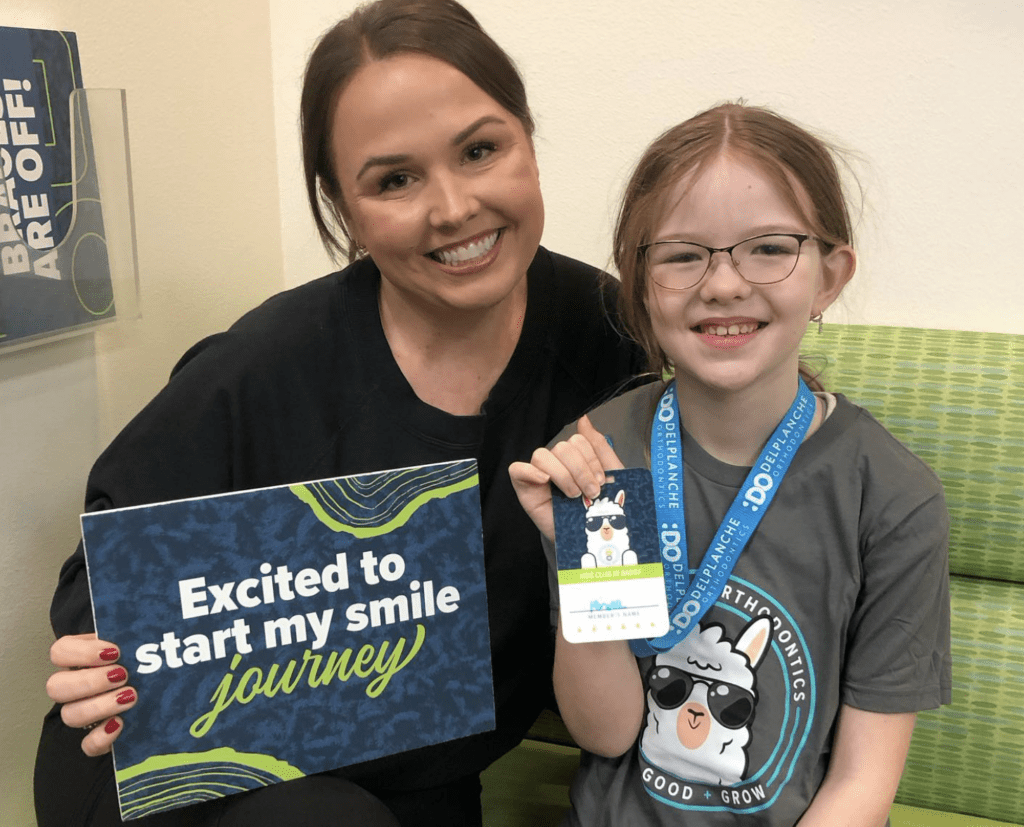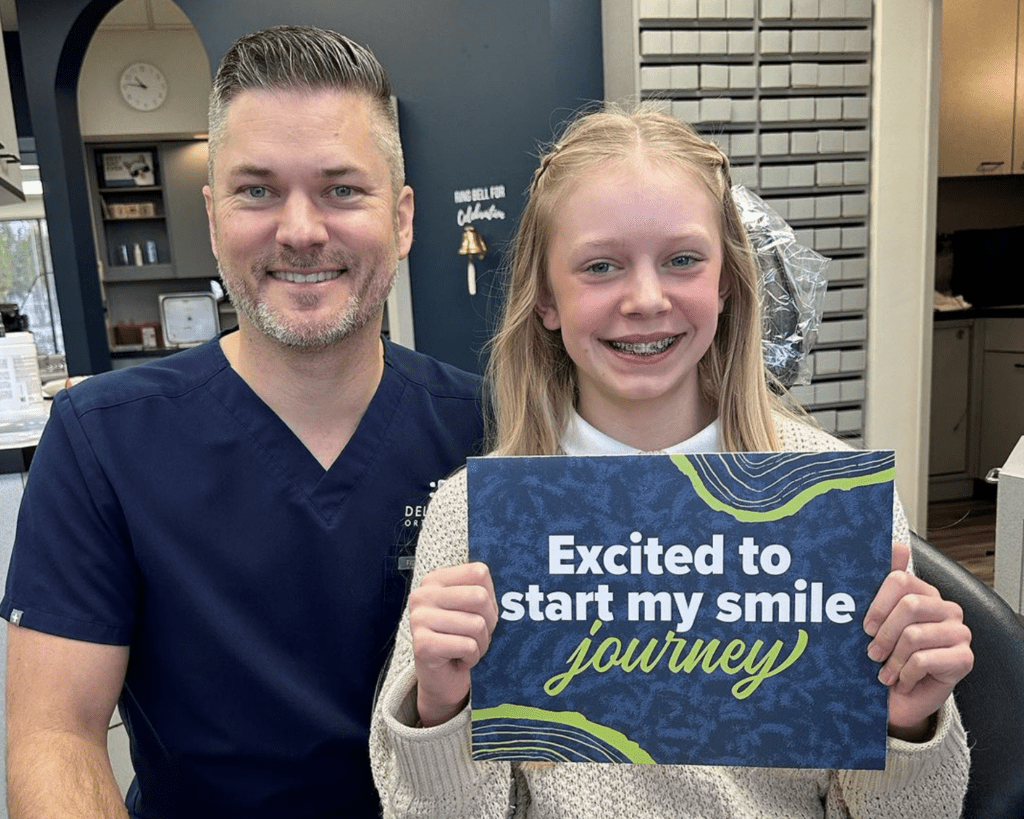In addressing the needs of our youngest patients, our practice carefully considers what makes them unique. One particular approach we employ is known as two-phase treatment, and our team at Delplanche Orthodontics is here to expand on this method today and answer the question: What is phase one of orthodontic treatment?
The Complete Solution
Before delving into the initial stage of this treatment, let’s outline the entire plan. The requirement for two-phase treatment differs based on individual patient cases, specifically tailored for children.
- Phase One (Early Treatment or Interceptive Phase): Typically occurring between the ages of seven and ten, this stage involves children who possess a mix of both baby and permanent teeth. The primary objective during this period is to tackle distinct orthodontic issues such as severe crowding, crossbites, or protruding front teeth—challenges that are most effectively addressed during a child’s growth phase. Addressing these challenges at a younger age and before puberty often makes future treatment when all the adult teeth have erupted much easier and oftentimes quicker. At Delplanche Orthodontics, not all patients need Phase One treatment, but it is recommended for those patients who will greatly benefit from it.
- Phase Two: This stage takes place after the loss of most or all baby teeth, once most of the adult teeth have erupted and typically between the ages of eleven and fourteen. Its emphasis lies in achieving the ultimate alignment of permanent teeth and ensuring proper alignment of both the upper and lower jaws. Similar to Comprehensive treatment, Phase Two Treatment typically employs full braces or other orthodontic appliances to precisely adjust the positions of teeth and the bite.
Understanding Phase One
Now, we can examine common reasoning for phase one treatment in pediatric patients:
- Severe Crowding: It’s typically advisable to commence early treatment when there is notable crowding among the teeth. Early intervention allows us to generate additional space for the proper eruption of permanent teeth.
- Crossbites: Occurring when the upper and lower teeth fail to align correctly, crossbites can be rectified by directing the growth of the jaw, thus averting more pronounced misalignments in the future.
- Protruding Front Teeth: Children with prominently protruding front teeth can benefit from this treatment, which specifically tackles protrusion issues and serves as a preventive measure against potential tooth injuries.
- Dental and Skeletal Discrepancies: When significant variations exist between the sizes of the upper and lower jaws or other skeletal concerns, phase one treatment emerges as an optimal solution.
- Habits and Other Oral Health Concerns: Orthodontic challenges arising from habits like thumb-sucking or tongue-thrusting find resolution in phase one. Additionally, early intervention can assist in managing oral health issues, including difficulties in chewing or speaking.
- Space Maintenance: Employing appliances to sustain or create space for permanent teeth is a common aspect of phase one treatment, particularly when there’s a potential risk of impaction or other eruption complications.
- Improving Facial Esthetics: Initiating treatment early to address orthodontic issues contributes to a more symmetrical development of the face and profile.
- Functional Issues: Problems related to chewing, speech, and jaw function can be effectively addressed during this phase of treatment.

FAQs
We completely understand that you may have additional questions about this approach, and we are prepared to address some of the typical queries right here!
Q: What is the duration of phase one treatment?
The duration can vary widely depending on the child’s individual case and the severity of the issues. At Delplanche Orthodontics, the active portion of Phase One Treatment typically ranges from several months to one year or longer.
Q: How frequently are follow-up appointments required during this process?
Regular check-ins with Dr. Delplanche are essential for any orthodontic treatment. During this phase, you’ll typically attend appointments every 6-8 weeks to monitor progress, make necessary adjustments to appliances, and address any immediate or ongoing concerns. Attendance at these appointments is crucial. Once the active portion of Phase One Treatment is completed, we will continue to monitor the child’s growth and development several times a year until ready for Phase Two.
Q: Does phase one treatment eliminate the need for braces later on?
Sometimes, but not always. Phase One Treatment serves as a foundational step for the eventual alignment achieved with braces for some patients. It conditions the child’s teeth and mouth, allowing for proper growth and development of permanent teeth, which prepares them for the use of appliances in the Phase Two treatment and final stage of treatment for youth patients.
Q: Will my insurance cover phase one treatment?
Coverage varies among providers and plans. It’s recommended that you check with your insurance provider and discuss payment options with our office.
Q: Is phase one treatment necessary for every child?
No, Phase One Treatment is not necessary for every child; in fact, at Delplanche Orthodontics, we recommend treatment based on individual needs. We do not believe in prescribing the same treatment methods to all of our younger patients, as each child has their own unique needs. While some children may only require comprehensive treatment in their adolescent years, early intervention can be crucial in specific cases and preferred in others. Each recommendation is tailored to the unique circumstances of the child.

Finding Solutions
Delplanche Orthodontics is committed to excellent service for all ages, but we also recognize that kids can be a special case. We’re pleased to provide treatment through our offices in Beaverton (503) 966-4594) or Lake Oswego (503-699-6569).
